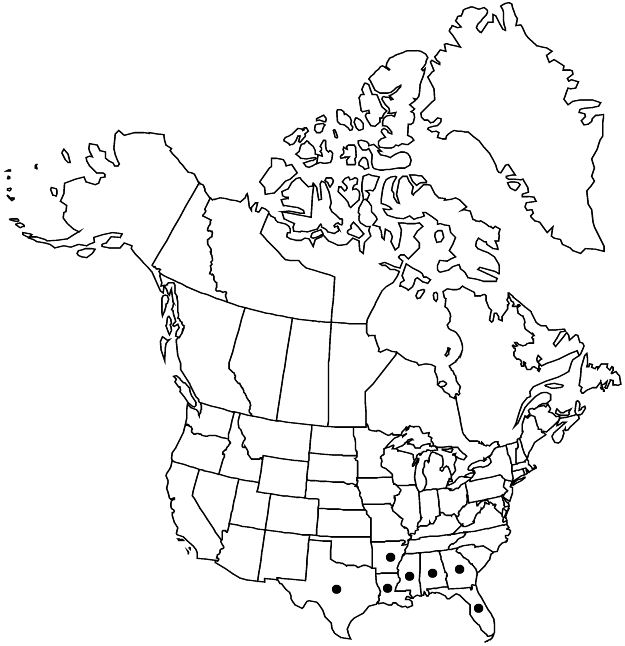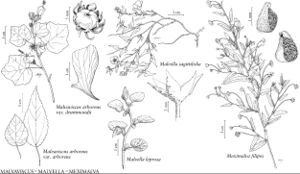Malvaviscus arboreus var. drummondii
Ann. Missouri Bot. Gard. 29: 215. 1942.
Plants clone-forming, 0.5–1.5 (–3) m, softly hairy. Stems glabrous proximally, densely and minutely tomentose distally. Leaf-blades deeply 3-lobed, broadly ovate, 4–9 × 4–12 cm, at least as long as wide, base usually strongly cordate, margins crenate-dentate, apex obtuse (acute). Petals 1.5–3.5 cm. 2n = 28.
Phenology: Flowering summer–fall.
Habitat: Limestone slopes and ledges, wooded arroyos, along streams in shaded areas
Elevation: 0–200 m
Distribution

Ala., Ark., Fla., Ga., La., Miss., Tex., Mexico (Coahuila), Mexico (Tamaulipas)
Discussion
It is questionable whether var. drummondii is native to states east of Texas. The remarkably uniform populations that grow in central Texas suggest that the variety is native there. The taxon apparently was, early on, taken into cultivation in coastal southeastern United States, where it has escaped and persisted. Variety drummondii is also grown in California, North Carolina, and South Carolina but has not naturalized.
Selected References
None.
